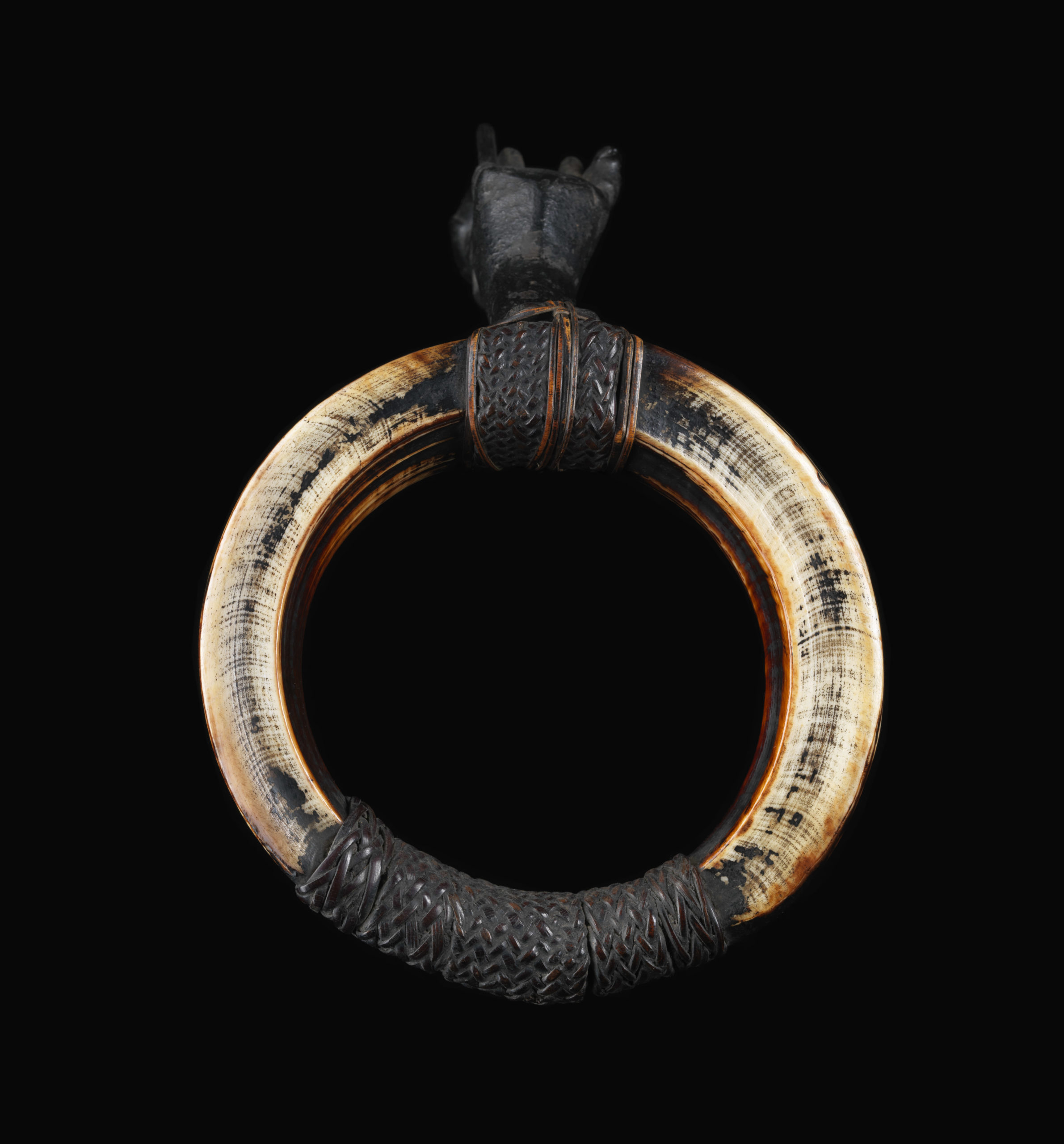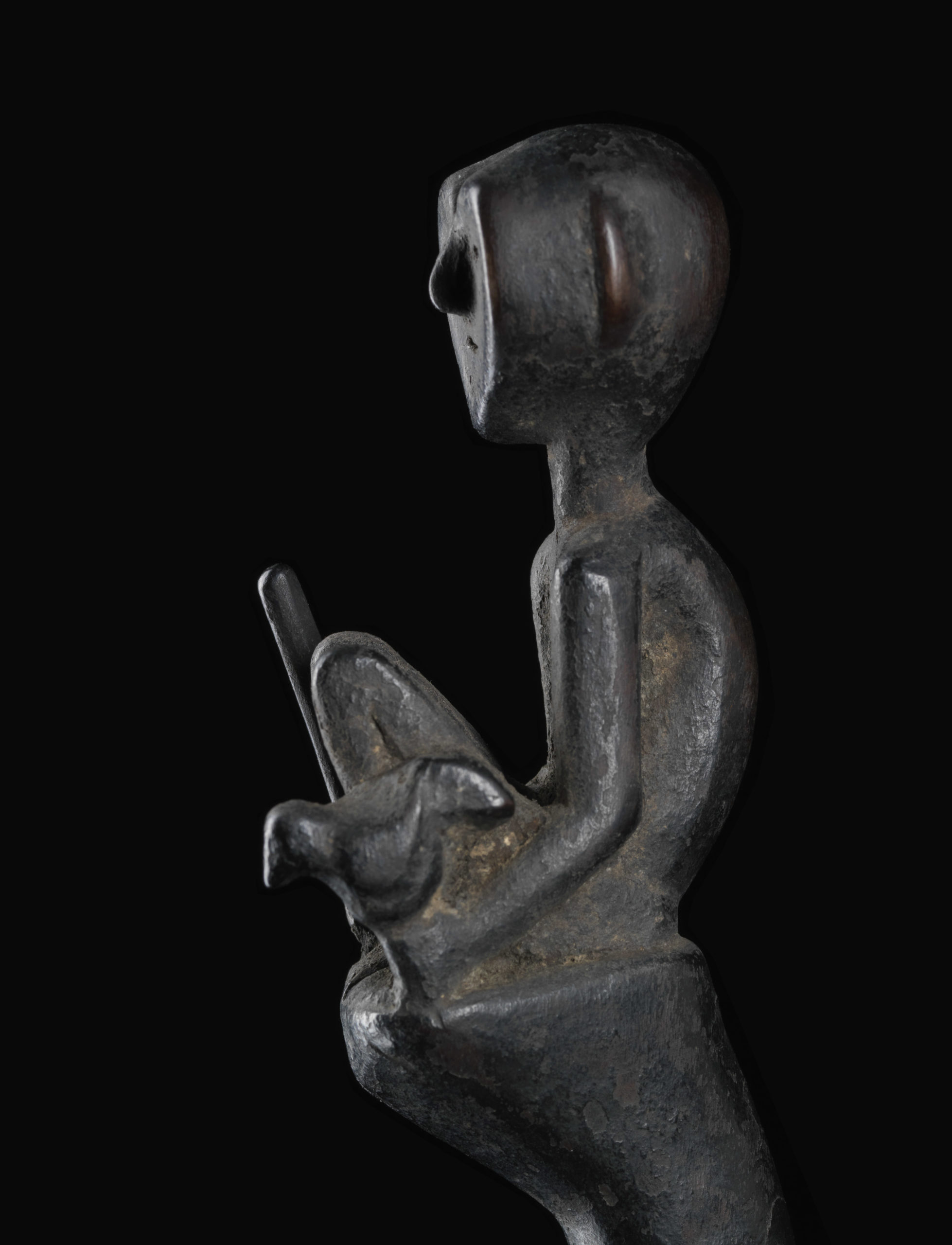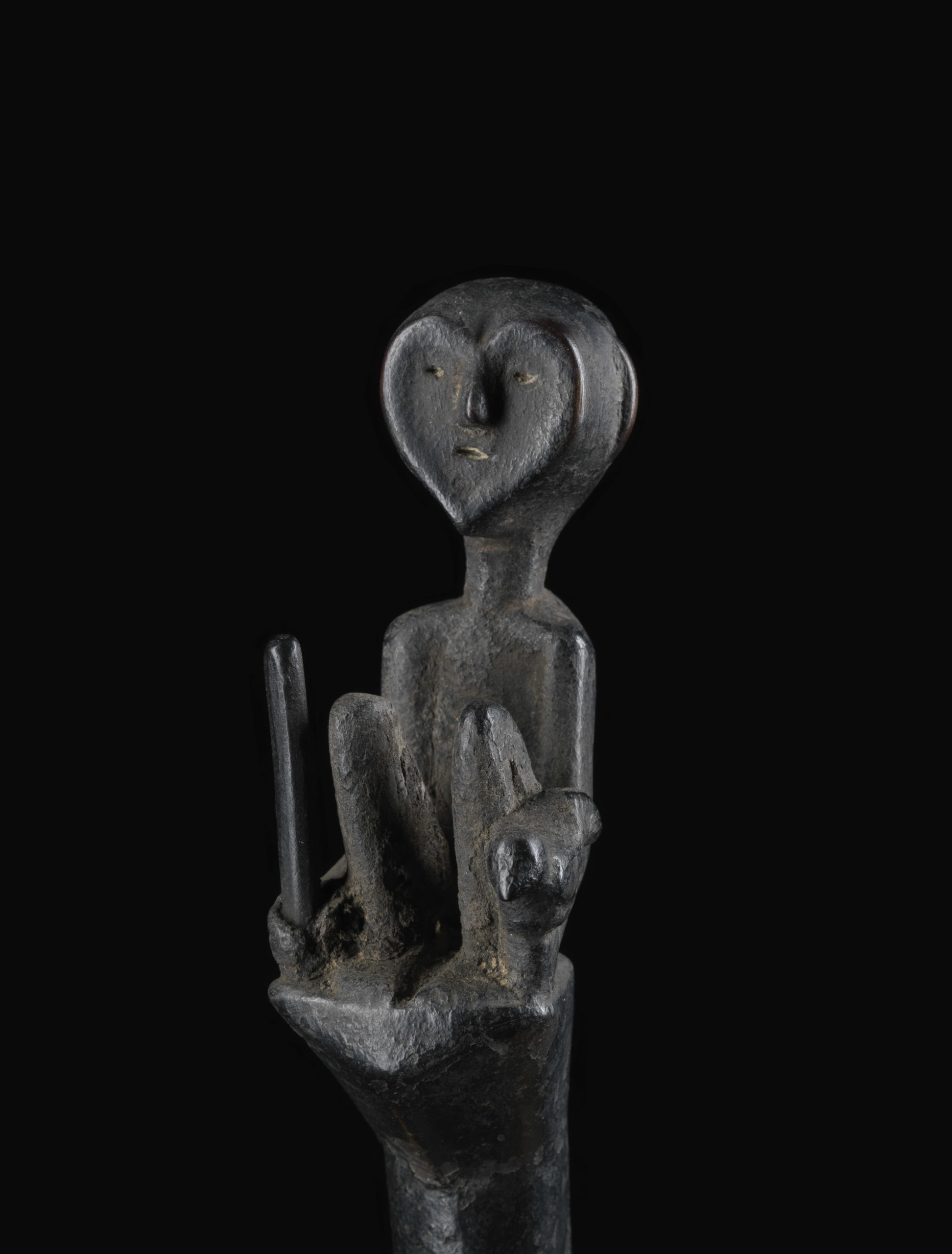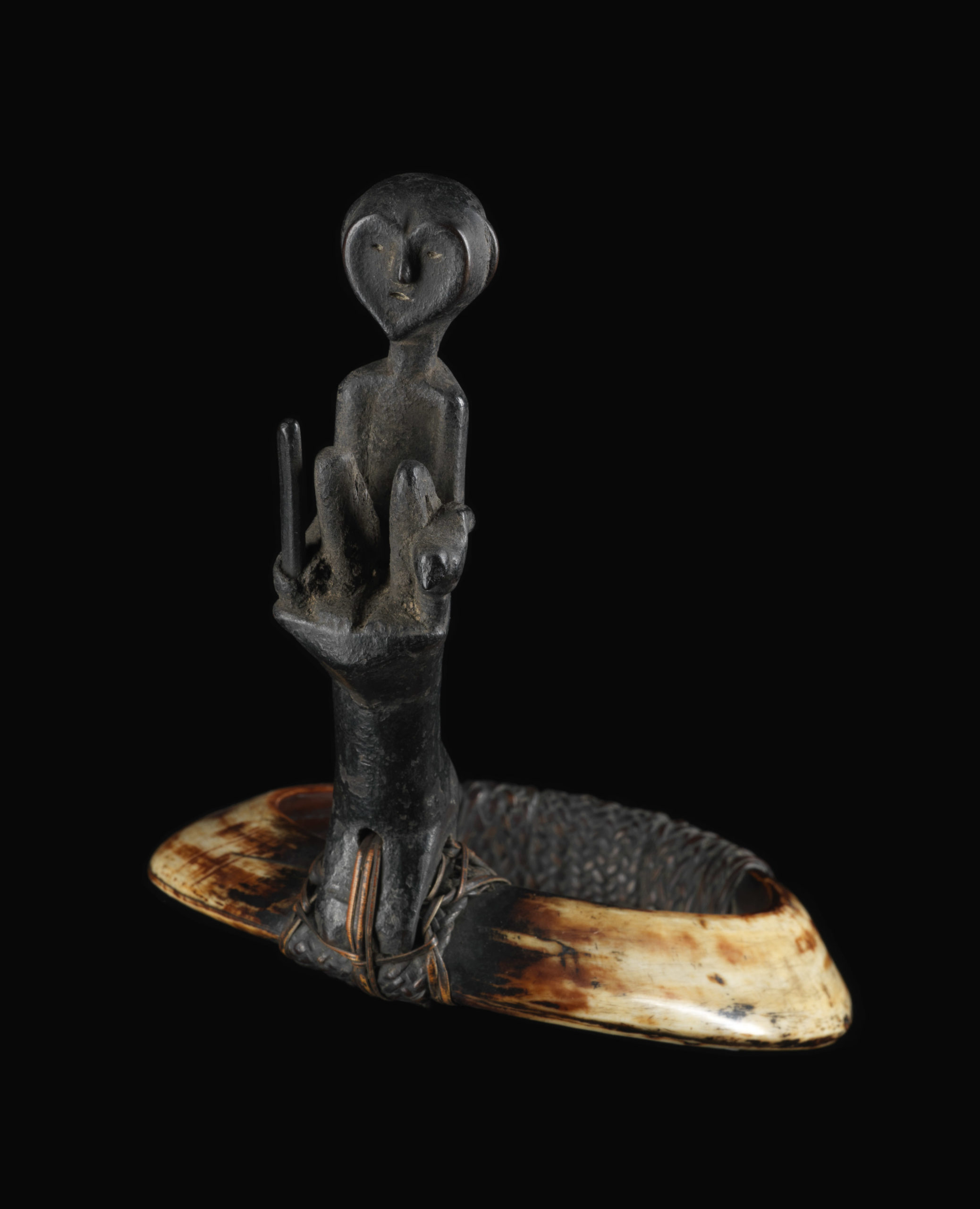Upper arm decoration “tangkil”
This upper arm bangle called tangkil is made of two boar’s teeth and held together with a rattan band. A small squatting figure adorns the object. There may also be hair on the head, in our example there was none.
Upper arm rings are common jewellery for men and women throughout the South East Asian archipelago. On many statues they are also emphasised as an important part of the ornamentation of the depicted personality. Typologically unique, however, are the bracelets of the warriors of Igorot. They consist of two boar tusks that are tied together with rattan wickerwork, cloth or cords to form a bracelet and are called tangkil, tongkil, abkil or tangka in the Bontok, baningal in the Ifugao, tukar in the Kalinga and tangkil in the Gaddang and Ilongot. With the tangkil of the bontok it is a carved ancestor figure. In common parlance this figure is also called bulul, although it is not a guardian figure in the strict sense. In the Gaddang it consists of a wooden stick covered with thread in a certain pattern, in the tukar the Kalinga either has a tuft of hair of a headhunting victim attached directly or he carries an attached textile roll or a scabbard made of two hollowed out bamboo halves from which human hair hangs. Tangkil figures are worn by Ifugao and Ilongot warriors during war campaigns and during the dances after the war campaign as an amulet on the upper arm. They mean that the warrior is supported by his ancestors or that they are present during the risky undertaking. According to our interpretation hipag can be called “antennas” for the ethereal sphere. The figures are fed cyclically with chicken blood and other substances.
| Object | upper arm decoration “tangkil” |
| Culture | Philippinen |
| Time | 19th century |
| Dimensions | Diameter 13,50 cm, figure height 15 cm |
| Material | Boar tusk, wooden figure, rattan |







